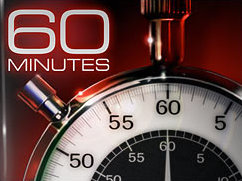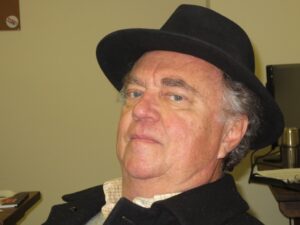Editor’s Note: This is a segment from author John Haliman’s book The Search for Good Wine. This particular exert was written on March 15, 1992.

Last October, I wrote a column about recent findings that red wine can reduce heart disease. Then on Nov. 17, 1991, CBS’s 60 Minutes did a segment on the same subject.
Called The French Paradox, it stressed how the French have two-thirds fewer heart attacks than U.S. citizens even though they eat much more fat and hardly exercise at all.
In the fist month after their show, sales of Cabernet Sauvignon, the most popular American red wine, went up 22 percent. At Robert Mondavi, sales of their Napa Cabernet increased 78 percent. In the three months after the 60 Minutes segment, sales of all red wines in the United States increased 15 percent. Beyond the raw selling power of television, what does this mean?
First of all, there is a dramatic shift in wine color patterns. For the past 20 years, white wine had grown constantly in sales, while red wines had dropped. Some say this was due to the “chill factor,” meaning Americans like their beverages cold, and white wines are usually drunk colder than reds.
The new trend is easier to understand. Americans are now turning to red wines because it is only in reds that resveratrol, the presumed heart-saving chemical, resides. Well-known to Chinese herbal doctors for centuries, resveratrol is only found in grape skins. Red wines are fermented on the skins, causing not only their red pigments, but also their resvertrol to dissolve into the wine. White wine, on the other hand, is usually made with minimum skin contact to keep it from being too acidic. Most whites don’t have skin contact beyond a few minutes that they are being pressed. Reds have several days, even weeks.

In Burgundy, winemakers keep submerging the skins into the juice, unwittingly getting more resveratrol as well. In Bordeaux, especially at old-style wineries and ultra-modern ones who imitate them, skin contact can last three weeks or even a month. Perhaps the old French winemaker saying “a wine’s first duty is to be red” had more folk-wisdom than even the French realized.
Another side-effect of teh 60 Minutes segment has been a flood of reader mail asking which reds have the most resveratol, which has become a sort of liquid oat-bran for clogged artery sufferers.
No in-depth scientific studies hav appeared on this issue yet, but your best bets would be wines of deep red color, like darker Bordeaux, red Burgundies, California cabernets of the dark persuasion, and heavy-duty Rhone grapes, such as Syrah. Inky zinfandels and syrahs should also be rich in resvertrol.
Wine Tip of the Week: For inexpensive reds rich in resveratrol, try Sangre de Toro from Torres, near the site of the Summer Olympics in Barcelona. In U.S. wines, try B.V. Cabernets. They ferment their wines warmer than most, to remove “off” aromas and, in the process, keep lots of heart-saving resveratol.
 John Hailman of Oxford is a regular contributor to HottyToddy.com on two subjects: Law and Wine. Now retired from both his “day job” as a federal prosecutor in Oxford after 33 years and his “night job” of 25 years as a nationally syndicated daily columnist in more than 100 daily papers on wine, food and travel for Gannett News Service and the Washington Post, Hailman will cover both topics under the titles of The Legal Eagle and Wine Tips of the Week. HottyToddy.com will also run periodic excerpts from Hailman’s upcoming book of humorous legal stories, From Midnight to Guntown: True Crime Stories From A Federal Prosecutor in Mississippi. Hailman now teaches Federal Trial Practice and Law and Literature at the University of Mississippi.
John Hailman of Oxford is a regular contributor to HottyToddy.com on two subjects: Law and Wine. Now retired from both his “day job” as a federal prosecutor in Oxford after 33 years and his “night job” of 25 years as a nationally syndicated daily columnist in more than 100 daily papers on wine, food and travel for Gannett News Service and the Washington Post, Hailman will cover both topics under the titles of The Legal Eagle and Wine Tips of the Week. HottyToddy.com will also run periodic excerpts from Hailman’s upcoming book of humorous legal stories, From Midnight to Guntown: True Crime Stories From A Federal Prosecutor in Mississippi. Hailman now teaches Federal Trial Practice and Law and Literature at the University of Mississippi.
